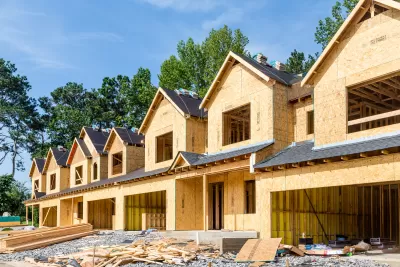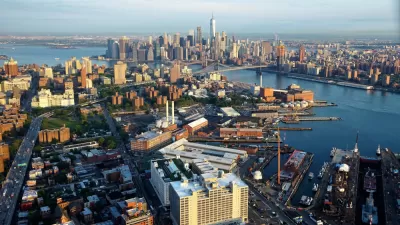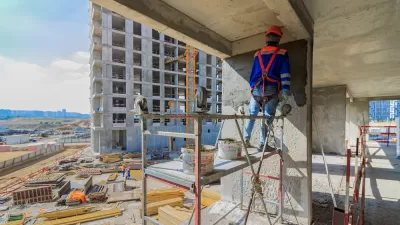An analysis of 12 U.S. cities found that new market-rate construction often leads to more affordable units becoming available, but the effect varies across housing markets.

A new study from the Federal Bank Reserve of Minneapolis shows that the construction of market-rate housing units leads to more available affordable housing units. Writing in BisNow, Kayla Carmicheal outlines the results of the study, which analyzed renter moves in 12 U.S. metro areas. “When high-income residents move into new market-rate housing, their previous homes are freed up for other renters or homebuyers. When those residents move, their old place is then available for others and the price on it may lower because of a shift in demand. This process is known as filtering.”
The study contributes to an ongoing debate over what policies are most effective in improving housing affordability and making more housing available to renters and homeowners alike. While some policies offer rental assistance and tax incentives for affordable housing developers, others can improve the overall building climate and boost the housing supply by streamlining permit processes and updating zoning regulations to meet today’s needs.
Carmicheal notes that filtering doesn’t occur evenly across cities. The study “found that the Minneapolis-St. Paul metro has a high rate of filtering, with nearly 0.6 affordable units opening up for every new market-rate unit, while New York City has a below-average rate of less than 0.2 units freed per new build.” Meanwhile, “When there are fewer homes available but high demand, older homes that used to be accessible to first-time home buyers are more likely to be snagged by higher-income residents over time,” amounting to a reverse effect and, in some cases, the displacement of older residents and the gentrification of previously low-income neighborhoods.
FULL STORY: Market-Rate Construction Frees Up More Affordable Homes, Study Finds

Study: Maui’s Plan to Convert Vacation Rentals to Long-Term Housing Could Cause Nearly $1 Billion Economic Loss
The plan would reduce visitor accommodation by 25,% resulting in 1,900 jobs lost.

North Texas Transit Leaders Tout Benefits of TOD for Growing Region
At a summit focused on transit-oriented development, policymakers discussed how North Texas’ expanded light rail system can serve as a tool for economic growth.

Why Should We Subsidize Public Transportation?
Many public transit agencies face financial stress due to rising costs, declining fare revenue, and declining subsidies. Transit advocates must provide a strong business case for increasing public transit funding.

How to Make US Trains Faster
Changes to boarding platforms and a switch to electric trains could improve U.S. passenger rail service without the added cost of high-speed rail.

Columbia’s Revitalized ‘Loop’ Is a Hub for Local Entrepreneurs
A focus on small businesses is helping a commercial corridor in Columbia, Missouri thrive.

Invasive Insect Threatens Minnesota’s Ash Forests
The Emerald Ash Borer is a rapidly spreading invasive pest threatening Minnesota’s ash trees, and homeowners are encouraged to plant diverse replacement species, avoid moving ash firewood, and monitor for signs of infestation.
Urban Design for Planners 1: Software Tools
This six-course series explores essential urban design concepts using open source software and equips planners with the tools they need to participate fully in the urban design process.
Planning for Universal Design
Learn the tools for implementing Universal Design in planning regulations.
City of Santa Clarita
Ascent Environmental
Institute for Housing and Urban Development Studies (IHS)
City of Grandview
Harvard GSD Executive Education
Toledo-Lucas County Plan Commissions
Salt Lake City
NYU Wagner Graduate School of Public Service





























